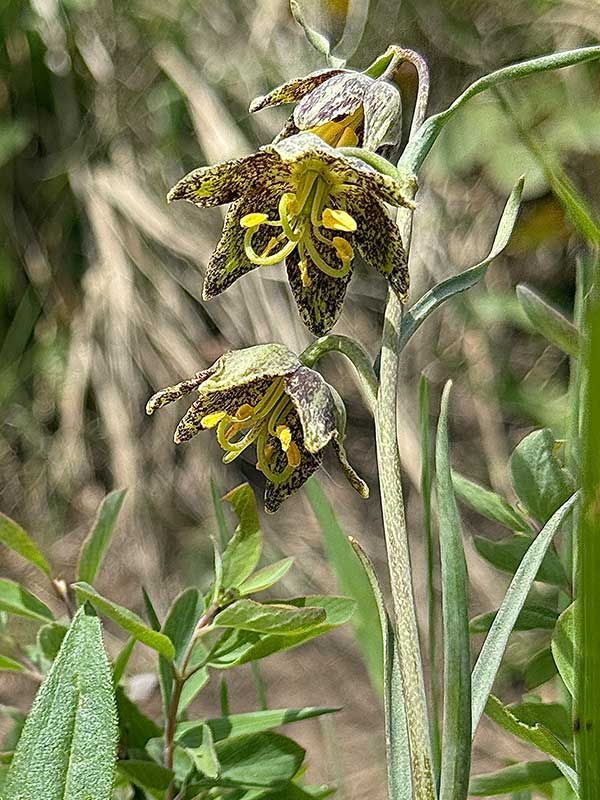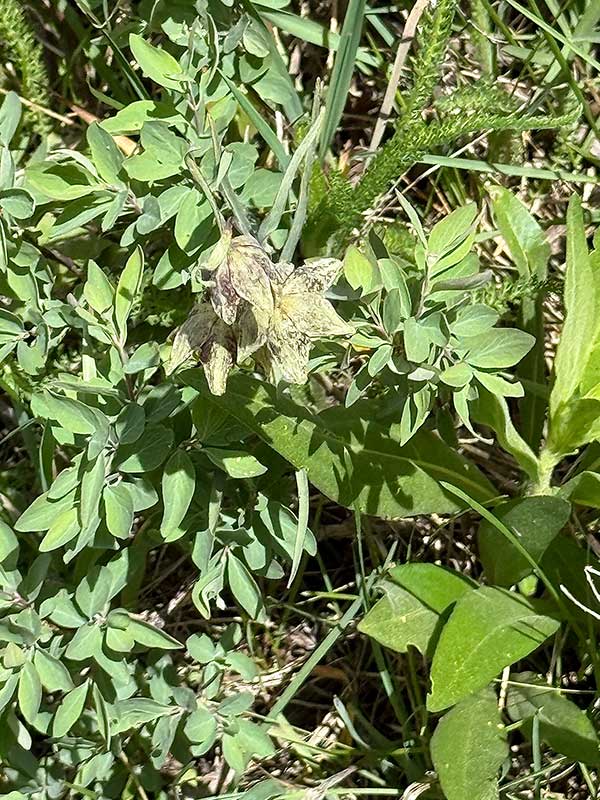Fritillaria atropurpurea / spotted fritillary
- uncommon, difficult to find, hard to see
- six “petal” nodding flower – yellow with dark purple spots
- six bright yellow anthers
- few, grass-like leaves
- usually growing in the [plant] litter at the edge of a forest
Also known as: purple fritillary, spotted mountainbells, spotted missionbells, chocolate lily (used for several species)
The spotted fritillary is one of only three species of fritillary in Idaho, the others being yellow bells and F. affinis (which goes by many of the same common names as F. atropurpurea). IF you see it, it will likely be in the mouldy litter layer beneath trees, at the edge of a shrub or tree shelter. Rarely, it might be in the open. Although it is “safe” in the Valley, it is endangered in several states to the south and east of us. See it, enjoy it, go away.
There isn’t really much to this plant. It grows from a bulb, sending up a thin stem, perhaps reaching 16 inches tall, but perhaps only 5 inches. There are only a few, narrow, pointed leaves. Being a monocot, the leaves are “grass-like”. You are unlikely to see it before it blooms.
For flowers, there are 1–3 per stalk from the central leaf axis. They are nodding, i.e. leaning over or hanging down. Each has 6 tepals (3 each petals and sepals), each only 1/2 to 1 inch long. They are yellow-ish or cream colored, with heavy, dark-purple mottling. There is a central style surrounded by six stamens with very large, yellow anthers. The style has a tip split into three bits that curve back to be tucked under the tepals. The anthers start dark, but then get yellower and larger as the flower matures.
Once pollinated, the round-ish flowers are transformed into a green “dice box” (the English translation of Fritillaria) which are seed pods with six sides, each of which is nearly rectangular. There is a photo of this in the gallery.
This species has the widest geographic distribution in the genus, the only other species coming near it being yellow bells. Most other species of fritillary are limited to the west coast, many to California alone.
| Color | |
|---|---|
| Family | |
| Blossom size | |
| Inflorescence size | |
| Inflorescence type | |
| When? | |
| Where? |




